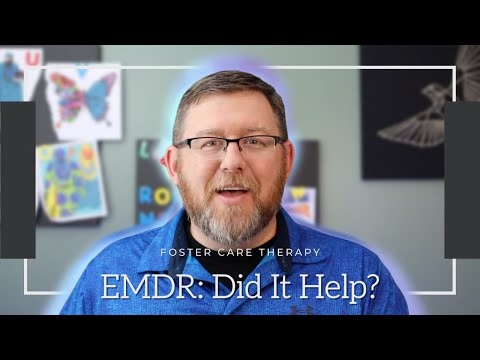In his recent video, Nick from “Let’s Go Dad” delves into EMDR (Eye Movement Desensitization and Reprocessing) therapy, a treatment method gaining traction within foster care, adoption, and trauma-focused communities. EMDR, which has roots in therapeutic practices since the 1980s, is now recognized as a promising approach for those dealing with unresolved trauma, particularly children. Nick’s discussion centers on what EMDR is, how it works, and his family’s personal experience with the therapy. He also reflects on how EMDR impacted his son, Robert, who faced challenges due to traumatic memories. Through the family’s journey, Nick underscores the value of readiness and openness for making EMDR a successful tool in the healing process.
What is EMDR?
EMDR, or Eye Movement Desensitization and Reprocessing, is a therapeutic approach designed to help individuals process and heal from traumatic experiences. It is based on the idea that unresolved memories can continue to trigger negative responses, particularly when external stimuli evoke these memories. For individuals who have faced trauma—especially at a young age—this means that certain sights, sounds, or even smells can reignite feelings of distress associated with the original traumatic event. EMDR aims to help reprocess these memories, allowing individuals to manage these responses in a healthier, more regulated way.
Why Trauma Needs Reprocessing
Nick explains that traumatic memories are often overwhelming, especially in children who may not fully understand or remember what happened to them. These unresolved traumas can surface frequently through various sensory triggers, causing individuals to relive intense emotions tied to their past experiences. Children in foster care, in particular, may encounter these triggers more often, making it essential for caregivers to seek therapeutic options like EMDR to aid in managing these responses. For Nick, EMDR emerged as a potential tool to help his son, Robert, handle these emotional flashbacks.
A Family’s Experience with EMDR Therapy
While Nick emphasizes that he is not a professional therapist, he shares his family’s journey with EMDR therapy, facilitated by a licensed counselor experienced in the method. Initially, he was skeptical about its effectiveness but decided to try it after talking to professionals who vouched for its success, particularly with children and adults. According to Nick, his son’s counselor began the sessions with a gentle approach, encouraging Robert to think of a past memory, label it with a word, and represent it visually by drawing. The sessions did not use eye movement but instead employed small handheld buzzers, which alternately vibrated, providing a rhythmic sensation known to aid in memory processing.
Observing the Impact of EMDR
Despite initial doubts, Nick observed tangible changes in Robert after a few months of EMDR. One of the most notable outcomes was Robert’s increased willingness to discuss his past. He began sharing not only about traumatic events but also more general memories and feelings. This newfound openness allowed Robert to process memories with less emotional resistance, which in turn helped him speak about his biological family and past experiences more freely.
Is EMDR Right for Everyone?
Nick reflects on EMDR’s potential benefits but also acknowledges its limitations. For EMDR to be effective, children—and even adults—need to be willing to engage openly with their therapist and explore their emotions. Nick emphasizes that while EMDR is promising, it requires active participation and a level of self-honesty that some younger children may struggle with. For some children, more playful forms of therapy, like sandbox therapy, may be more suitable. He points out that EMDR is not a universal solution and may not work for every individual. However, based on his family’s experience, he believes it is worth considering, particularly when traditional therapy methods are insufficient.
Final Thoughts and Encouragement
After seeing the positive impact of EMDR on his son, Nick now advocates for its use as a potential pathway to healing for children and adults alike. By reprocessing traumatic memories, individuals may find themselves better equipped to handle past trauma in healthier ways. Nick encourages families and caregivers to consider EMDR, especially if they are supporting children who exhibit signs of trauma. As he notes, “If this therapy can reprocess painful memories to make them more manageable, then it’s truly worth a try.”


Leave a Reply